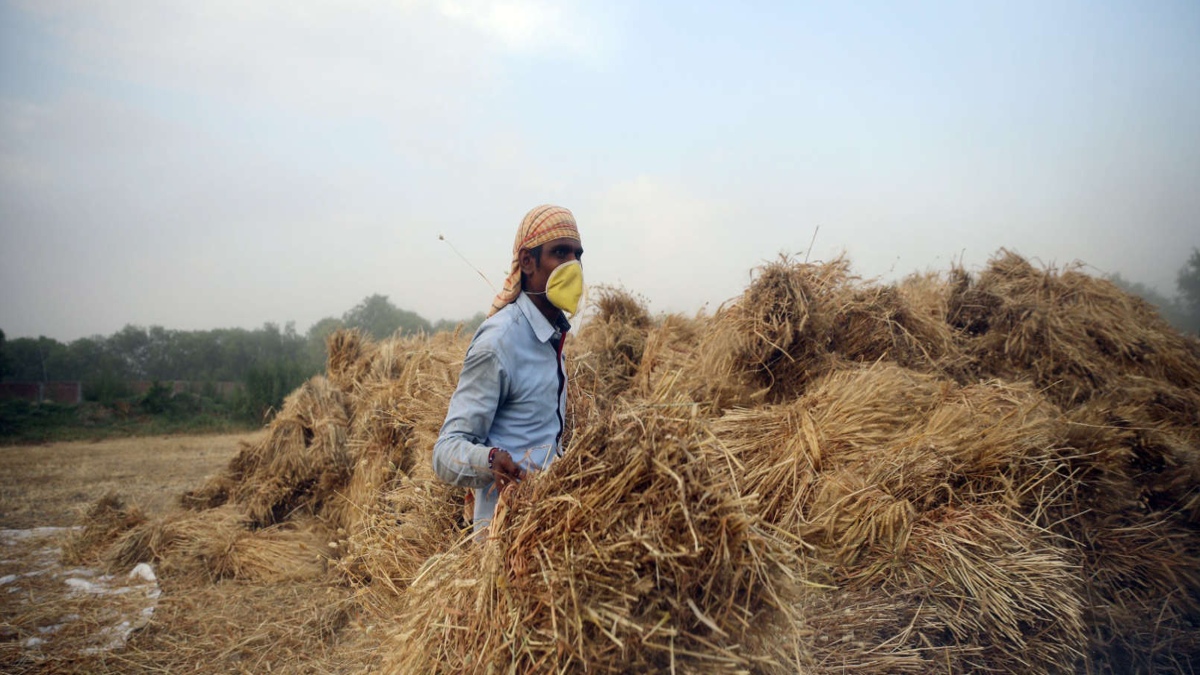


Since Independence, India implemented several policies for agricultural development and farmers’ social improvement. Undoubtedly, the scenario has changed over time, but not in the desired direction. Due to the abysmal performance in rural development in India, it is probably high time for the government to be pragmatic and change its role from that of a direct and dominant interventionist to that of a facilitator and regulator also. The government always tries to help the farmers in two ways, either by the direct or indirect support of agriculture practices or support their livelihood. The government gives the product-specific subsidy for several products, such as rice, wheat, cotton, pulses, etc. Instead of product-specific subsidies, the government gives input subsidies, such as fertiliser, irrigation, and power subsidy. In addition, several ministries are continuing the various policies or programs to develop Indian agricultural practices and farmers’ livelihood.
TREND OF HERFINDAHL–HIRSCHMAN INDEX IN INDIA (1966-67 TO 2018-19)

 Source: Authors’ calculations
Source: Authors’ calculations

As a result, India achieved record food grain production from 1950-51 to 2018-19. However, primarily it was restricted to the major cereals only. Although cereal production increased significantly after the green revolution; but, the pulses and oilseed production did not reach the expected position. Consequently, there is a chronic shortage of edible oils and pulses in India.
But, in the recent past, a perceptible change in consumer preferences away from cereals towards high-value non-cereal nutrient-rich diets, including fruits and vegetables, is evident not only in India but also in India and around the globe. Here the question will arise regarding crop diversification, which is a process of reallocation of resources across crops, based on their comparative advantages. After this decades-long crop diversification, a shift has been generally observed, in the agricultural practices from the traditional lower-valued crop to high-value crops. This is an important milestone for agricultural development.
Herfindahl–Hirschman Index is widely used to measure market concentration. The lower it is, the higher is the extent of market diversification, and vice versa. This is typically done for firms as entities and their production values. We calculated the by taking each crop as a market entity in India, to gauge the extent of market concentration. As far as crop diversification is concerned, it is evident from the figure above that the level of diversification is prominent in India due to favourable agro-climatic conditions around the country and the government policies or schemes. An index of 0.01 or below indicates a highly diversified and competitive sector, while the range of 0.01 to 0.15 is considered unconcentrated, which is where we have been for over a decade. So, there is a scope for further improvements in crop diversification. The farm income per cultivator increased from Rs. 12,365 in 1993-94 to Rs. 1,20,193 in 2015-16. However, crop diversification in India enhances the farmers’ adaptability to external shocks and promotes self-reliance and sustainability in agricultural practices.
The connotation of crop diversification becomes more noticeable in the WTO-led globalised regime that restricts the scope for producer prices as an incentive to increase production. Again, the question arises whether farmers or cultivators respond to changes in consumer preferences by shifting their crop portfolio. This is because India is a largely low-income and resource-poor farmer-dominated country, with almost 99.43% of farmers coming under this category. If farmers will not grasp market signals, they will not only be in a disadvantageous position but also will be in a trap.
However, it is evident to enhance the production of high valued crops, which is becoming important for India’s trade regime. For instance, India is one largest importer of palm oil from Indonesia and Malaysia. India also imports some other vegetable oils, pulses, fresh fruits, etc. In addition, lower production of some products is not only the problem in India; the competitiveness of the domestic price of some crops is also another problem in Indian agriculture. One of the reasons, Indian farmers are facing an unfair and uneven playing field in the international trade scenario. As per farmer support in India is much lower than the many developed countries. This is because several developed and some developing countries are enjoying the final bound AMS entitlement.
India has also taken some of the great initiatives, besides the MSP and some existing schemes for agricultural development. Such as the National Mission on Oilseed and Oil Palm (NMOOP) is a new program launched during 2014-15 by the Government of India to enhance the production of oilseeds in the country. India has started the National Food Security Mission (NFSM) with the focus of increasing acreage productivity and production of pulses, oilseed with some other products. In addition, the Finance Minister has also unveiled, in the budget session of 2020-21, a 16-point agenda to achieve agricultural growth, reiterating the Union Government’s commitment to double farmers’ incomes by 2022. The points include everything from the liberalisation of farm markets and increased use of advanced technology to the development of an integrated farming system in rain-fed areas and more. In addition, the Indian government is also prioritising the agricultural infrastructure, particular food processing sector, etc. After several efforts through different policies and mechanisms, Indian agriculture and farmers’ progress may only start happening gradually. This is because the most well-intended and well-thought-out policies may not have an impact properly. In keeping this in the mind, Indian agriculture needs a big reform to promote a market-based solution for the farmers.
Suvayan Neogi is Senior Research Fellow (Economics) of Centre for WTO Studies, New Delhi, India. He is also PhD scholar of Symbiosis International (Deemed University), Pune, India. Dr Badri Narayanan is the founding director of Infinite Sum Modelling, Seattle and a senior economist with the University of Washington Seattle. He is also a Senior Fellow with ECIPE Brussels and Non-Resident Fellow with CSEP New Delhi.